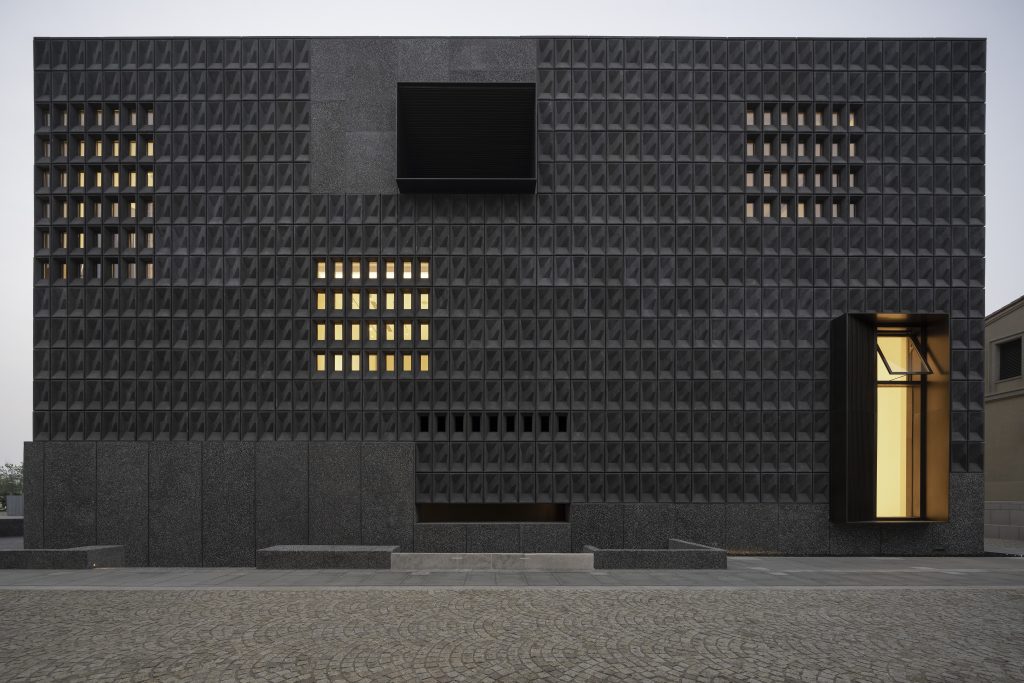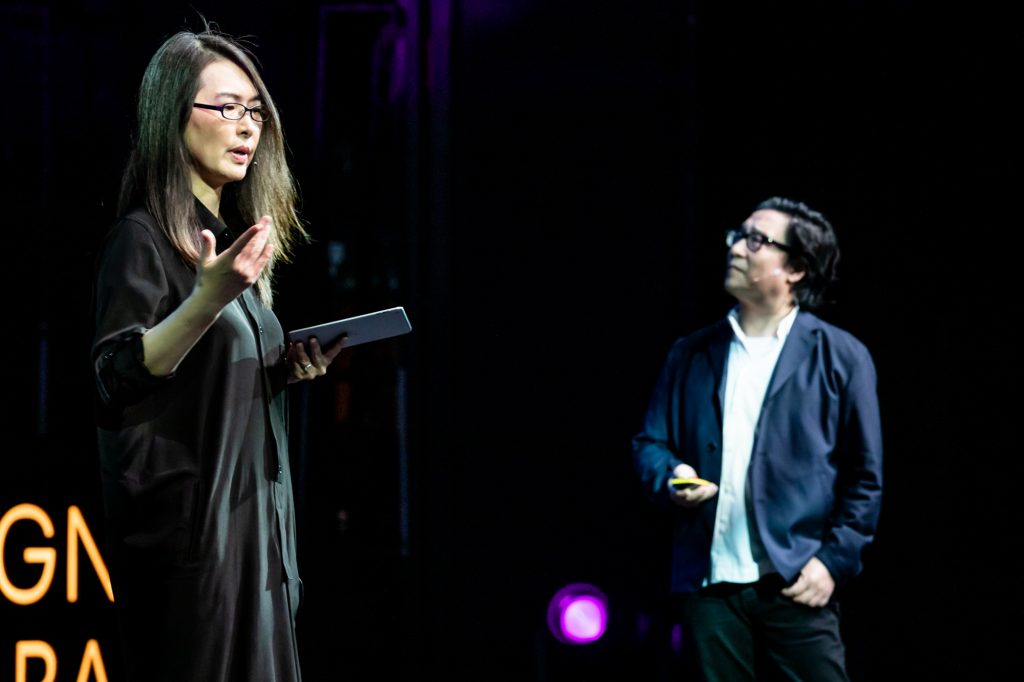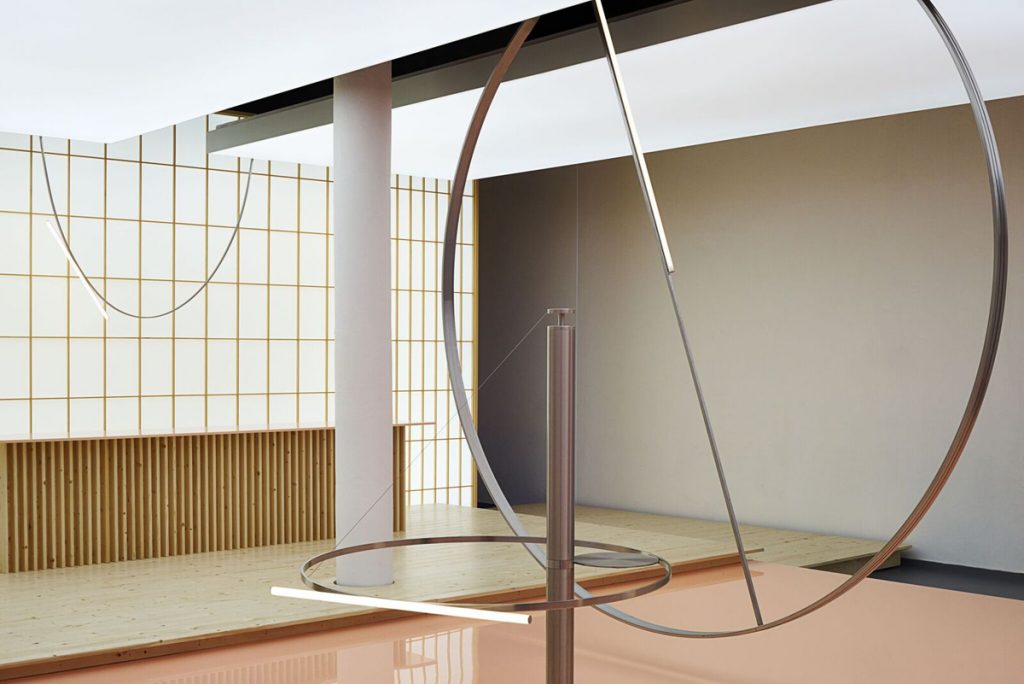Design Indaba 2020: Studio Neri&Hu Founders Lyndon Neri and Rossana Hu
The talent behind the Shanghai-based architectural design practice explains their three obsessions

Lyndon Neri and Rossana Hu are haunted by three obsessions: interiority, total design, reflective nostalgia. As Studio Neri&Hu (which they founded in 2004), their architecture is informed and enriched by these concepts and traces can be found in their private and public commissions, as well as in their product, interior and graphic design. Their inspiring talk at 2020’s Design Indaba bounced between Neri’s elaborate fantasies and Hu’s accurate definitions—offering insight into how the two work together. We spoke with the talented duo about how their obsessions are reflected in all their designs.

Based in Shanghai, Studio Neri&Hu does substantial work in China. Neri and Hu are acutely aware of the various social and cultural challenges in their homeland. During their presentation, they introduced the audience to some figures concerning rural and urban issues in China: by 2020, 60% of population will live in cities; 300 villages are lost per day; and of the country’s Intangible Cultural Heritage sites, 80% are rural. This means the risk for the future is enormous cities that are void of culture.
Neri explains, “One cannot survive without the other. The countryside is often a place of respect for people from the urban areas; people from the rural areas who want kids to have an education in the urban areas, often have aspiration to go the city. There is always that back and forth. The problem is when that becomes more one-sided—and for many years the emphasis has been on the urban issues, and rightfully so.” He explains that the government is making some positive movements “with propositions like the Silk Road, going west and building the inner China. Even if their idea has a little bit of a different goal, inevitably it also helps a lot of the rural areas because transportation becomes more convenient and it’s easier to travel. Therefore it’s more efficient and instead of taking two weeks, it will take a small number of days just to go back to your hometown. Very disparate issues in disparate places are actually intertwined over history and over time.”

This back and forth is front of mind when designing. Hu explains, “Beauty has a function of psychological and emotional healing and architecture today has lost it. Urban issues are important but rural projects are as important, so we decided to commit even though the commission is minuscule.” The Tsingpu Yangzhou Retreat (aka The Brick Wall) which Neri&Hu designed is the perfect representation of a rural project that both preserves and reinvents local culture. Located near the Slender West Lake in Yangzhou, the commission for the 20-room property was based on the adaptive reuse of several small buildings. Neri&Hu went with long, sweeping walls (one of their trademarks) which were built with local reclaimed gray brick. The result clearly defines open and closed spaces, private areas, courtyards, and ponds, but welcomes air and opens toward the sky.

The hotel is also evidence of their passion for “reflective nostalgia,” a concept introduced by Svetlana Boym in The Future of Nostalgia. Hu says, “For years nostalgia has been considered a medical condition. It’s a sense of wanting to go home. ‘Restorative nostalgia’ is wanting to go back, copying history, but for innovation and creativity we need ‘reflective nostalgia’ because in the process of going home you need to create something new.”

That’s what they did for Shanghai’s The Waterhouse at South Bund. Instead of demolishing the old building and creating something completely new, they were able to keep the old building as it was, preserving the walls in their original condition, adding a series of new functional elements—ultimately respecting the area’s history. “We play with thresholds, but these thresholds are actually very thin, like a veil. We’ve been consciously dealing with this issue. How do you deal with something that is permanent?” Neri begins. “We do believe in permanence and yet have that notion of how it operates between public and private, that dialogue between inside and outside. It is also a cultural issue. In Chinese we like the word ‘threshold’ because there’s a lot of meaning. It means ‘the in between.’ It also means ‘time’ and it also means ‘space.’ It means moving from one space to another.”

This takes us straight to the concept of “interiority.” According to Hu, “Rooted in our understanding of architecture is the idea of ‘interiority.’ It’s not just an interior, it’s not about interior design, but the inside of architecture. If we understand architecture that way, then obviously the design of the building—its facade or envelope—needs to make a better connection with the experience of moving in and out.” She explains that it’s also about connecting elements, “Connecting the rooms to the corridors, the inside of the building to the outside of the building, the outside of the building with the city. Even though our lines are very clear and delineate, I think they can align the spatial perception.”

One of the cases that better represents this drive is the New Shanghai Theatre, located in the French Concession. Formerly a theatre and cinema, now it features an interesting new entrance that creates a sort of enlargement of the sidewalk, allowing people from the neighborhood to be more directly in contact with the theater even when it’s closed. Also the interior design features a series of see-throughs and transparencies that allow the interior and the exterior to be connected always.

When it comes to the concept of “total design,” Neri and Hu remind us how important transversal creatives are. That’s why their studio is populated by young architects who work alongside interior designers, product designers, graphic designers—and the discussion is constant. “Our studio is treated like a school. Issues are constantly rehashed and discussed, and mistakes are brought up to that table,” Hu says.
Images courtesy of Design Indaba












